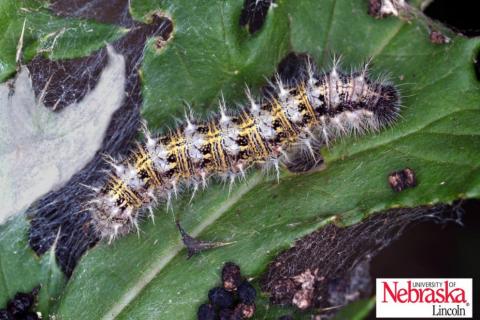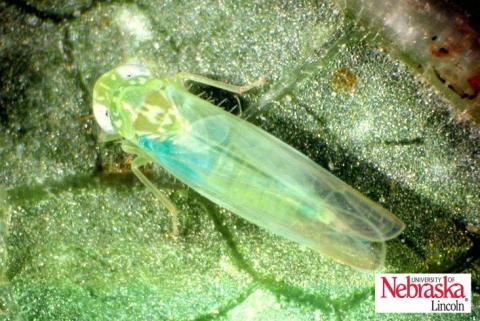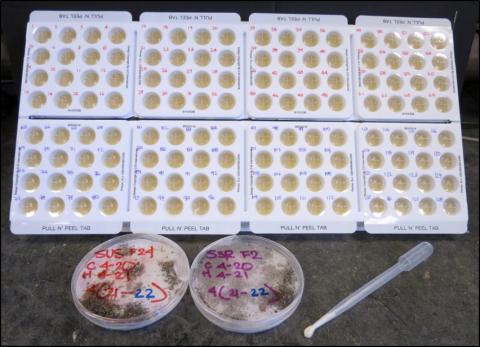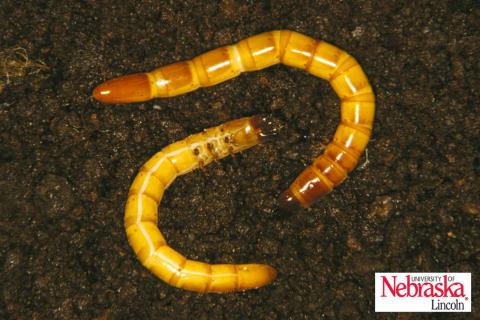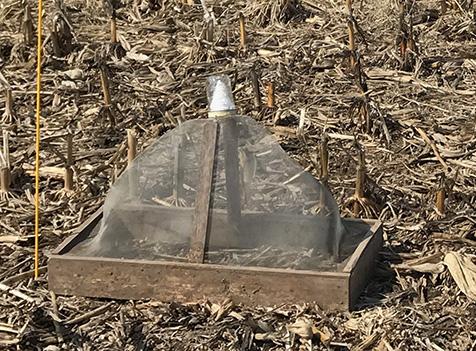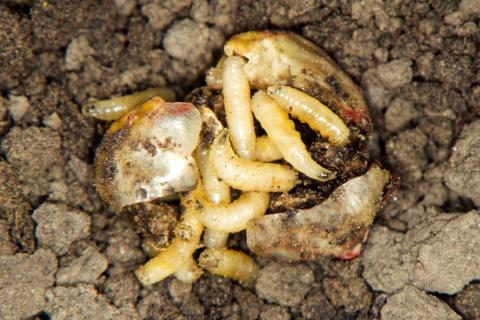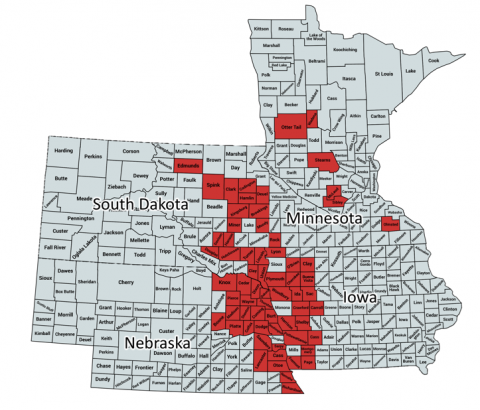Thistle Caterpillars In Soybean
June 12, 2019
The painted lady butterfly has been observed in eastern Nebraska for about a month and recently there have been reports of its immature stage, the thistle caterpillar, in soybeans.
Potato Leafhoppers in Alfalfa
June 11, 2019
Potato leafhoppers are reported in north central Kansas and may be arriving in Nebraska soon. It is not too early to begin scouting for these insects and protecting your alfalfa with one of the registered insecticides listed here.
First ECB Resistance to Bt Corn Reported in Canada
May 22, 2019
The first case of field-evolved resistance of European corn borer (ECB) to Bt transgenic corn has been reported in Canada. What does this mean for Nebraska corn farmers and how can they help maintain resistance here?
Scout Emerging Corn for Insects; Don’t Assume Protection
May 22, 2019
As corn begins to emerge, be alert to the potential for damage from early season insects such as cutworms, wireworms, white grubs, or other insects.
Alerts Available for Tracking Soybean Gall Midge
May 9, 2019
A new alert system will notify growers when emerging soybean gall midges are captured in field traps in counties where there was damage in 2018.
Avoiding Injury from Seed Corn Maggot
May 20, 2020
We have received several reports of injury from seed corn maggot that has reduced stands of Nebraska soybeans. Learn why they may have been more problematic this year.
What’s New in Entomology: Eastern Nebraska
January 9, 2019
An overview of what crop insect pests were leading threats in eastern Nebraska and where they were found. This article is from the Proceedings of the 2019 Crop Production Clinics.
Soybean Gall Midge: An Emerging Pest of Soybeans
January 9, 2019
Report on 2018 observations of the soybean gall midge and research on the effect of various management practices on damage and yield. This is an article in the Proceedings of the 2019 Crop Production Clinics.


